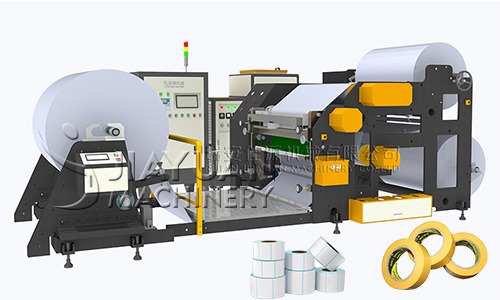
Labels serve as carriers of product information. Among them, self-adhesive labels (also known as pressure-sensitive labels) have become indispensable materials in modern packaging and identification fields due to their convenience: featuring a pre-applied adhesive backing, eliminating the need for additional glue, and allowing for immediate peel-and-stick application. This article comprehensively deciphers the essentials of self-adhesive labels.
1. What are Self-Adhesive Labels?
Self-adhesive labels are composite materials consisting of three core parts: the face stock (paper, film, or specialty material), the adhesive (glue), and the release liner (silicone-coated backing paper). Their defining characteristic is the adhesive layer on the back. To use, one simply peels off the release liner and applies the label, bypassing the mess of applying glue required by traditional labels. This offers significant advantages like ease of use and simple storage.
2. Development History and Market Status
Origin: Self-adhesive label materials were invented in the 1930s by American R. Stanton Avery, who pioneered the mechanized production of this technology.
Global Spread: Due to their convenience, self-adhesive labels rapidly gained popularity worldwide, developing into multiple varieties.
Development in China: China introduced the technology in the late 1970s. Initially, technology and equipment mainly came from Japan, focusing on the low-end market. With economic growth and increased awareness, self-adhesive labels quickly captured significant shares in the mid-to-high-end packaging market. Currently, thousands of domestic private enterprises operate in this sector, driving vigorous industry development.
Market Potential: Per capita consumption is a key market indicator:
USA & Europe: 3-4 square meters per capita per year
Japan: 2-3 square meters per capita per year
China: 1-2 square meters per capita per year
This data indicates substantial growth potential remains in the Chinese self-adhesive label market.
Premiumization Trend: Demand for high-end labels is surging. Domestic production capabilities now cover various high-end labels. Orders previously processed overseas are accelerating their shift to domestic production, becoming a major driver of industry growth.
3. Wide Range of Applications
Thanks to their flexibility and functionality, self-adhesive labels have permeated numerous industries:
Pharmaceutical Industry (drug information, anti-counterfeiting)
Supermarket & Logistics (price tags, logistics barcodes)
Electronics Industry (product identification, component labels)
Lubricants / Tire Industry (product parameters, specifications)
Daily Chemical Products (product instructions, promotional information)
Food & Beverage (ingredients, expiration dates)
Apparel Industry (hangtags, care instructions)
... and other fields requiring efficient identification.
4. Primary Material Classification
Self-adhesive labels are primarily categorized into two main types based on face stock material:
Paper-Based Self-Adhesive Labels:
Application: Mainly used for liquid detergents, mass-market personal care products, etc.
Current Status: Paper materials dominate usage due to the large market share of these products.
Film-Based Self-Adhesive Labels:
Common Materials: PE, PP, PVC, and other synthetic materials. Common finishes include white, matte, and clear.
Application: Primarily used for mid-to-high-end daily chemical products requiring durability, water resistance, weather resistance, etc.
Treatment Processes: To enhance printability, corona treatment or surface coating is often applied. To prevent deformation or tearing, some materials (like BOPP) undergo uniaxial or biaxial stretching.
5. Core "Sandwich" Structure
The fundamental structure of a self-adhesive label consists of three layers:
Face Stock: Carries the printed graphics and information, determining the label's appearance and physical properties (e.g., paper, film).
Adhesive: Located on the back of the face stock, providing the bonding function. Its type influences tack, permanence, etc.
Release Liner (Backing Paper): A silicone-coated protective layer preventing the adhesive from permanently bonding to it, facilitating die-cutting and peel-off application.
Refined Structure: In actual production, the face stock may have coatings to enhance printability or adhesion to the glue; the adhesive and liner themselves also involve specific coating process requirements.
6. Key Manufacturing Processes
The core production steps for self-adhesive label materials are Coating and Laminating:
Equipment Choice: Depending on product needs and volume, either split-type or tandem coating/laminating equipment can be used.
Critical Control Points (Directly Impact Material Quality):
Silicone Coating Weight on Liner: Controls release force.
Adhesive Coating Weight: Affects tackiness and cost.
Adhesive Drying Process: Ensures stable adhesive performance.
Rehumidification During Coating: Prevents material curling or deformation.
Coating Uniformity: Guarantees consistent performance across the entire roll.
From convenient everyday uses to complex industrial identification, self-adhesive labels have become the "information adhesive" of modern society. With the continuous growth of the Chinese market and ongoing advancements in production technology, the prospects for the self-adhesive label industry are broad, and its potential for application and innovation is highly promising.
 HOT LINE: 086-577-65159218
HOT LINE: 086-577-65159218












